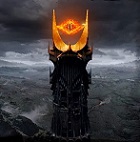loki100
Posts: 10920
Joined: 10/20/2012
From: Utlima Thule
Status: offline

|
I'll answer most of these as a batch at the end as they are mostly around the same theme and I think that gingerbread offers some valuable insigts
quote:
ORIGINAL: obssesednuker
Damn, your only something like 4-6 hexes from solidly establishing a frontline all along the D'niepr. Think you'll be able to do so before the blizzard dies down?
If it weren't for the drop to 40 morale in the April, then even I (a relatively total noob who is too cowardly to play multi) would be calling this a Soviet run away. Even then, it looks like the Vigabrand is going to have to work overtime if he wants to achieve even a stalemate.
Not the Dneipr as such, too far west for my rail net and as long as the river is frozen very vulnerable to a March offensive. I'll pull back to a better line (for supply etc in the mud turns).
My crude mid-late game logic is that each winter season (42-43 and then 43-44) the Soviets can breach one of the major river barriers. If the front is east of the Don then you have to clear the Dneipr in winter 43-44, depending on where his summer offensive holds I think I'll have a good chance at securing the Dneipr (or turning it in the north), next winter season
quote:
ORIGINAL: Pelton
Only a handful of games are not and the next patch is nerfing Germany so expect more run aways.
Its next to impossible for most people to play Germany and not get crushed early.
.05 will simply make game next to impossible for most people to play Germany.
Only TDV, Dave and myself I just do not see many great German players and you have to be great or elite.If your average you get smoked, good and Berlin will fall in late 44 or early 45.
Most people simply are not going to put in the required hours to get good at playing Germany.
Russian players have to make 12+ mistakes to lose, German players make one mistake before turn 4 and the game is OVER.
just on the question of balance, the war ended mid-May 1945 (depends on if you count the Soviet Prag offensive that happened after the formal ceasefire). So is mid-May the end point for a balanced game? If so, if the Soviet player does a bit better than early 1945 is still a product of a balanced game and late summer 1945 reflecting better German performance. So if in reality, and we have no real evidence, is a range of say Nov44-Aug45 game ends unbalanced? And that ignores the early axis victories?
quote:
ORIGINAL: mattp
I agree, the game is pro SHC to begin with (as it should be, it's not red against blue). I also agree that it's harder to play the Germans (though much more fun). And from what I've seen on some AAR's, some GHC are quite good at practicing a rehearsed opening, but who knows if they can carry the game into the dog days of December-February. This particular AAR, while very well done, is like reading about a 2nd round knock out in a boxing match. Barring Loki having a heart attack and dropping face down on his keyboard, this game is now 10 turns past over...
quote:
ORIGINAL: timmyab
The boxing analogy was in my head too. I was thinking if this was a fight and I was the referee I'd be stepping in to stop right about now :)
quote:
ORIGINAL: gingerbread
We have not seen the Soviet vehicle numbers for quite a while. This offensive has not been cheap in that aspect.
The Soviet army is large very early, 6M end of November is a to me new record.
1.7M casualties end of August with a healthy 1.3M captured should be OK from the Axis perspective, but then something happened, or rather did not. What? Is this the effect of no FBD 5?
Pelton is doing his usual, so I don't directly see it as a lack of fuel for the Panzers.
Do we need to rebalance?
I don't this is as over as some of you. Partly I've played vigabrand before in AGEOD PBEM. He is good at recovering, in an epic Rise of Prussia I took Prag as the Prussians, besieged Wien and still lost (mainly as he used my own Russian gambit on me).
Mainly the game situation. It looks a lot like Stef vs Oshawatt, but there Stef ran his army into the ground over winter so Oshawatt was in the strategic ascendency from Aug 42. All Stef could do was to feed the few decent reinforcements into rebuilding his firebrigade. Here vigabrand is going to have a fresh luftwaffe/panzers/elite infantry. But its clear he has one chance at this, and I think I can attack where he's weak, once I know where his summer offensive is going.
So his scope for a riposte is a lot better. He also inflicted a lot of losses in 1941, I'd lost 2m million prisoners and 220k killed by the end of November. In effect, I traded off the 1941 army for my industrial base and I think you need to do this now that HI is so important.
Trucks are going to be a problem. I reckon on losing 5k per turn in blizzard, here I've been running at 7k, again the trade off is in the Gds etc but it is a trade off, not a cost free outcome.
Why its ended like this I'm not sure. In my game with SigUp we used pretty much the same rule set (setting my morale at 95% I think pretty much cancelled out the old +1 ... and that only really finished the game with the new 1942 NM levels). I think Vigabrand was too cautious in the south, he should have put on pressure even at the cost of outrunning his rail heads. Inevitably Soviet resistance will be weak. I also think he should have kept up the pressure at Moscow, I tend to see the cities of Kalinin-Rzhev-Vyazma-Kaluga as an outer fortress ring. Hold them all and Moscow is pretty safe, lose them all and the only way to save Moscow is pure numbers (and hope), as it is in this game I lost none of them.
I don't think with mild winter/no +1 a German player needs to run away, so Vigabrand is clearly offering up his normal infantry divisions as punch bags in return for a very strong offensive core. Whether that is the best strategy we'll see.
_____________________________
|
 Printable Version
Printable Version











































 . If so, it will be okay, but I think there is lot of fun for us (the players and the readers from this very great AAR) in it and so we will continue.
. If so, it will be okay, but I think there is lot of fun for us (the players and the readers from this very great AAR) in it and so we will continue. 





















 New Messages
New Messages No New Messages
No New Messages Hot Topic w/ New Messages
Hot Topic w/ New Messages Hot Topic w/o New Messages
Hot Topic w/o New Messages Locked w/ New Messages
Locked w/ New Messages Locked w/o New Messages
Locked w/o New Messages Post New Thread
Post New Thread